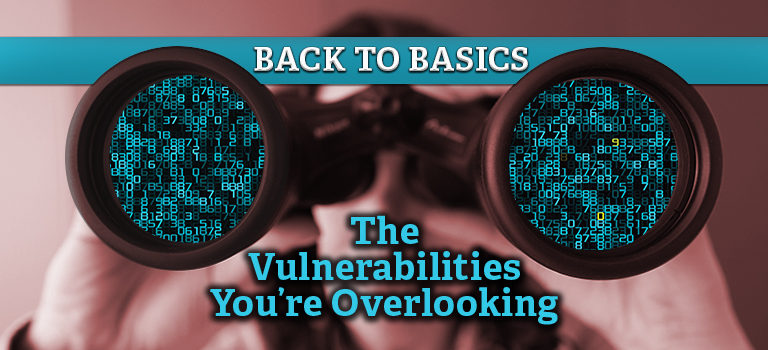Cybersecurity – Back to Basics
Wake Up, Your Data Is Under Attack

Data security remains a top level issue around the world. No matter the size or industry, organizations are incessantly attacked by sophisticated cybercriminals who aim to steal sensitive data, and disrupt or even dismantle their operations. To safeguard their data, organizations need to deploy numerous strategies, with particular attention to encryption of sensitive stored data. By rendering data useless to intruders, encryption helps mitigate the damage from a breach. According to IBM, the average cost of a breach in the United States reached $9.44 million in 2022, a number that is only expected to grow. This alarming statistic alone should serve as a wakeup call to any who still doubt the severity of this problem.
Data breaches have become increasingly advanced. There are several recurring types of breaches, which businesses of all sizes have experienced and should keep top of mind. Notably healthcare organizations and government agencies have recently experienced a surge in attacks.
Malware, along with phishing schemes and other kinds of social engineering have become some of the most pervasive methods of cybercrime. Additionally, insider threats account for a substantial number of data breaches, with human error one of the most common causes of compromised network security.
Various Vectors for Cyber Criminals
Categories of malware include spyware, trojans and ransomware. Each has unique attributes, but all exploit network vulnerabilities to infiltrate systems. Ransomware, in particular, has gained significant attention in the news in recent years. This type of cyber attack cripples an organization’s ability to access key parts of the network and critical data. Spyware, on the other hand, actively steals confidential data. Malwarebytes.com reveals that about 80% of all internet users’ systems are affected by spyware, with 89% of this group completely unaware of its presence.
Perimeter defenses, such as anti-virus software and firewalls, may provide some level of protection against these attacks, but it is important to recognize that all perimeters can be breached. Therefore it becomes even more imperative to keep data within an organization encrypted. By implementing encryption solutions, data is rendered useless to cyber criminals even when they lay their digital hands on it.
Social engineering, whereby an unauthorized party attempts to manipulate a target into divulging specific information or taking certain action, is another major problem in data security. According to Verizon’s most recent Data Breach Investigations Report, social engineering is present in three-quarters of data breaches. In the CS Hub Mid-Year Market Report 2022, 75% of those surveyed named social engineering and phishing schemes as the top threat to their cybersecurity efforts.
A report by Arctic Wolf Networks states that 90% of cyberattacks target employees – a low risk, high reward vector for initiating a breach. Cyber criminals, upon obtaining credentials for an employee, often impersonate a legitimate contact in email or text messages. Unaware of the deception, the targeted individual becomes the insider threat, providing an open gateway to the intruder with a single click. Once inside, the intruder can progressively gain access to more network components and confidential data, or simply install malware. As vigilant and competent staff might be on the whole, all it takes is one slip up to compromise security.
Research from Stanford University finds that 88% of all breaches have some kind of employee error at their root. While educating staff about the best data protection practices, mistakes are inevitable. Staff training remains essential but it is equally critical to not leave your data exposed to unauthorized access by ensuring encryption measures are in place..
The CIA Triad
Data security rests on three foundational principles known as the CIA triad: confidentiality, integrity and availability. Taken together, these principles are concerned with preventing unauthorized access to sensitive data, protection of that data from erasure or modification, and ensuring proper functioning of access and security controls. All foundational elements must be present in order to combat these various types of cyber attacks and keep data protected.
NetLib Security’s Encryptionizer software provides a solution, across all industries, for encrypting and securing data at rest, regardless of the industry—be it healthcare, government, automotive or any other. Organizations everywhere face the pressing need to encrypt their data to protect their customers and themselves, as well as meet a global network of compliance standards, such as PCI, GDPR, HIPAA Omnibus/HITECH, and FIPS 140-2. Encryptionizer assists with these needs, offering transparent data encryption right out of the box, with no additional programming required and virtually zero impact on performance.
About NetLib Security
NetLib Security has spent the past 20+ years developing a powerful, patented solution that starts by setting up a formidable offense for every environment where your data resides: physical, virtual and cloud. Our platform simplifies the process while ensuring high levels of security.
Simplify your data security needs. Encryptionizer is easy to deploy. It is a cost-effective way to proactively and transparently protect your sensitive data that allows you to quickly and confidently meet your security requirements. With budget considerations in mind, we have designed an affordable data security platform that protects, manages, and defends your data, while responding to the ever changing compliance requirements.
Data breaches are expensive. Security does not have to be.
NetLib Security works with government agencies, healthcare organizations, small to large enterprises, financial services, credit card processors, distributors, and resellers to provide a flexible data security solution that meets their evolving needs. To learn more or request a free evaluation visit us at www.netlibsecurity.com.
